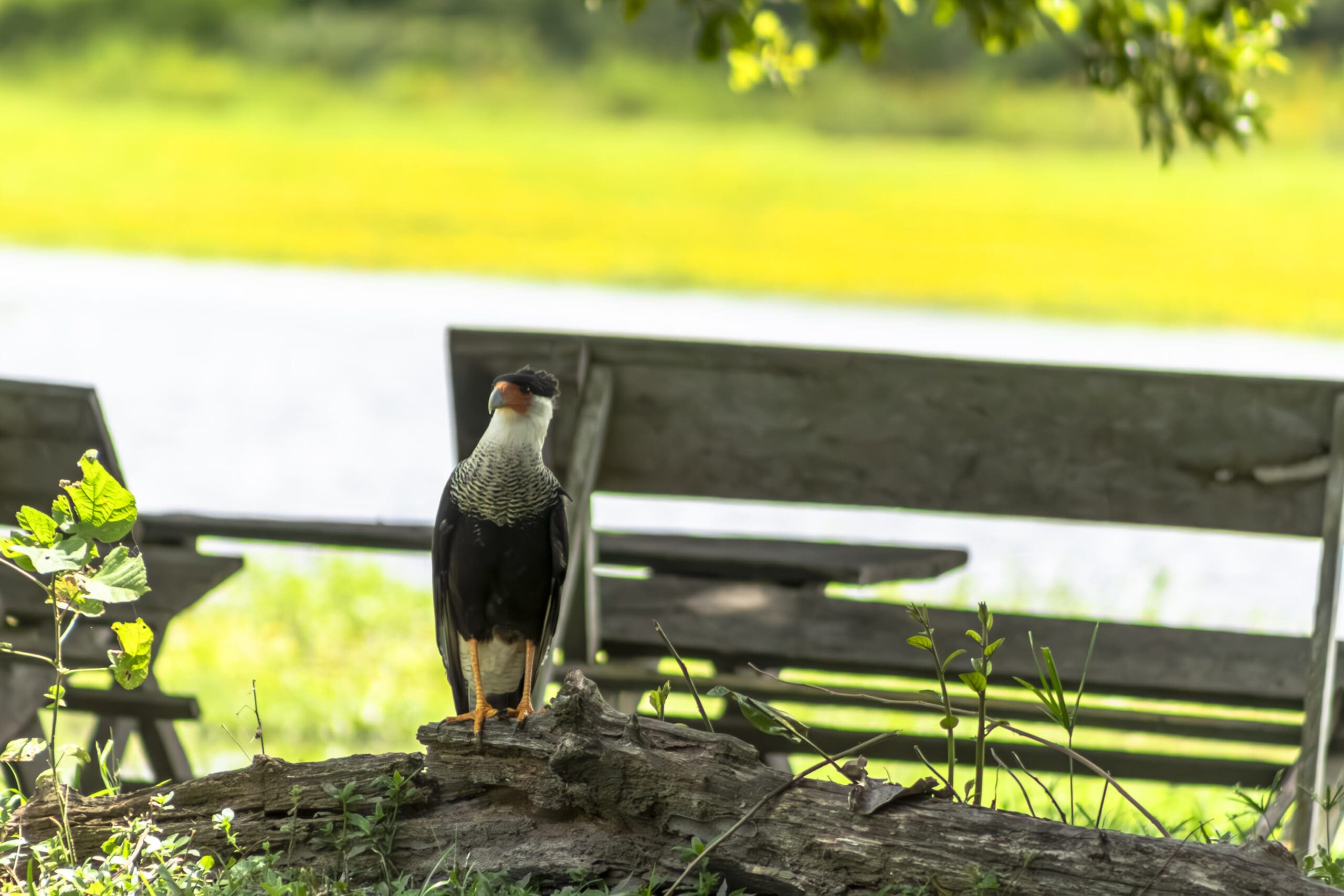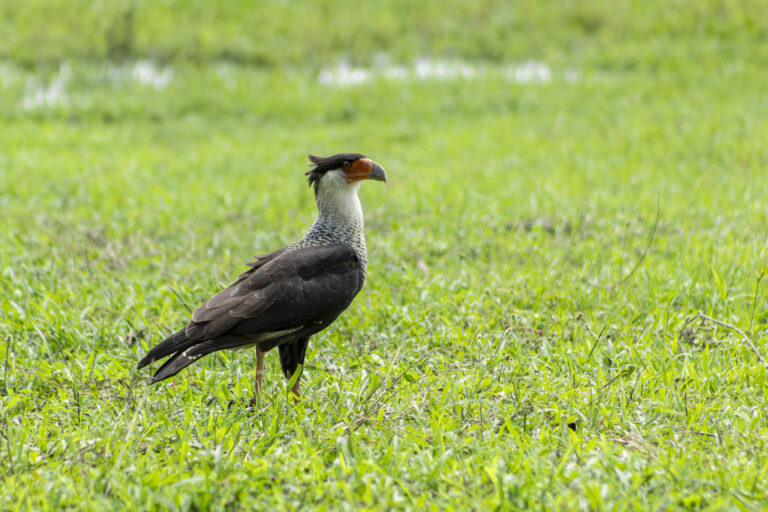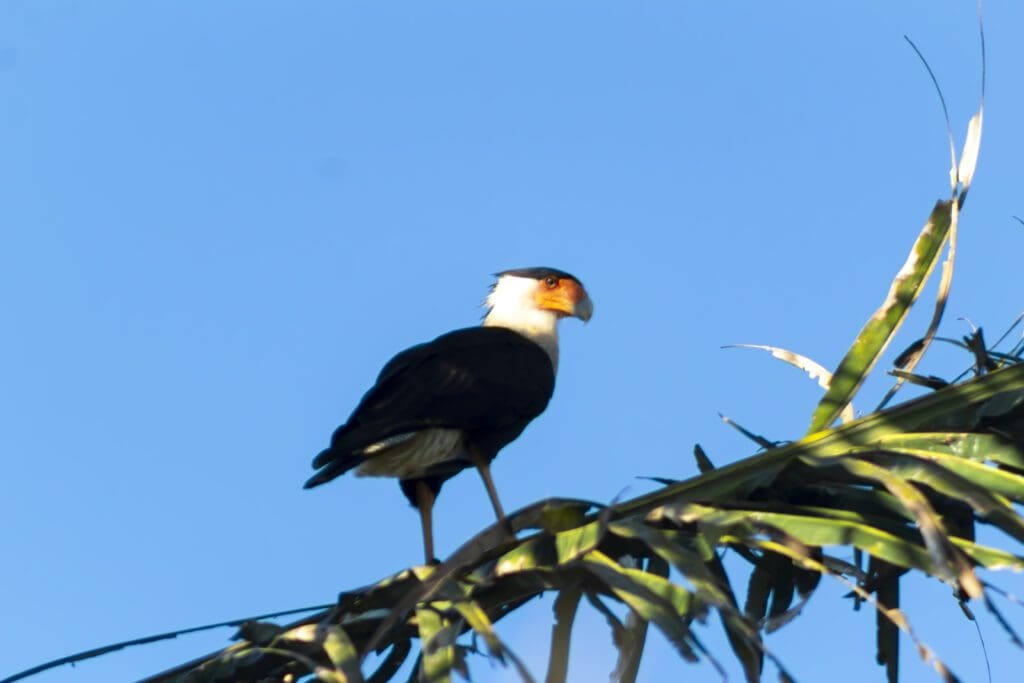
A large, long-legged bird of open habitats. It often moves along the ground or perches visibly on a fence post or electric pole. Note its dark “cap,” pale neck, and dark body. The color of its face varies from orange-red to pale pink, contrasting with its pale grayish beak. In flight, look for the conspicuous white flashes on its wings and tail. It primarily feeds on lizards and snakes. It is widely distributed from the southern United States to the southernmost part of South America, typically found in open fields, deserts, or beaches.
Order: Falconiformes| Family: Falconidae
Scientific name: Caracara plancus
Common name: Caracara
Conservation status: Least concern (LC)
Best season for crested caracara: All year round
Description
The Caracara is a medium-sized bird of prey. Its total length ranges from 49 to 64 cm, and its weight typically ranges from 1050 to 1600 g, except in northwestern Argentina, where weights vary between 700 and 960 g. The wingspan measures between 120 and 130 cm. Females are slightly larger than males in general measurements, particularly in wing chord and bill depth. Caracaras have long legs compared to other birds of prey, relatively flat feet, and slightly curved, almost flat claws that are suited for their terrestrial habits. Adults (definitive basic plumage) are striking and unlike any other raptor, featuring a bright orange-red face, blue bill, yellow legs, and long, flattened, dark plumage on the crown that is clearly defined and can appear as a crest when raised.


Distribution
The Caracara has a somewhat fragmented distribution mainly because the open habitats preferred by this species are found irregularly throughout its range. It is present in both tropical and subtropical zones. In general, the species’ range extends from the Florida Peninsula, Cuba, southwestern Louisiana, southeastern Texas, northern Chihuahua, northern Sonora, southern Arizona, and Baja California Sur, down to Tierra del Fuego and the Falkland Islands.




Habitat
The Caracara is found in a variety of open and semi-open habitats below 3,000 meters in elevation, including open or semi-open grasslands, pastures, pampas, palm savannas, deserts (with low-profile ground vegetation and suitable scattered tall vegetation for nesting), riverbanks, and especially ranch lands with livestock (for example, in the plains). It sometimes also utilizes marshes and open forests/shrublands.
*Source: Birds of the world


